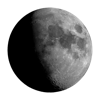47 Cassiopeiae
47 Cassiopeiae is a double hypergiant star of spectral class F0 in the constellation of Cassiopeia.
47 Cassiopeiae visual magnitude is 5.38. Because of its faintness, 47 Cassiopeiae is visible to the naked eye only from locations with very dark skies, while it is not visible at all from skies affected by light pollution.

Celestial Coordinates
Apparent
J2000
Galactic Coordinates
Finder Chart

Magnitude, Color, Spectral Class
The red dot in the diagram below shows where 47 Cassiopeiae is situated in the Hertzsprung–Russell diagram.

Star System Properties
47 Cassiopeiae is a visual double star which can be observed only with the help of very large telescopes. The table below shows key information about the 47 Cassiopeiae double sysyem:
Distance, Radial Speed, Proper Motion
47 Cassiopeiae is distant 109.40 light years from the Sun and it is moving towards the Sun at the speed of 26 kilometers per second.
Alternative Designations
Visibility from Your Location
47 Cassiopeiae is circumpolar and transits at 23:34 UTC (altitude: 40.6°)









